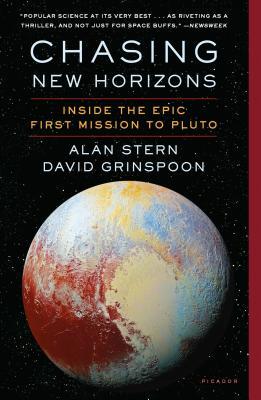In 1989 Pluto’s orbit reached perihelion, the closest point in its approach to Sun. In May of that year, Clyde Tombaugh, the American astronomer who had discovered Pluto in 1930, gave a lecture at the Adler Planetarium in Chicago. As fortune would have it, I attended his talk and was able to meet with him one on one afterwards.
Yet even at perihelion in 1989, very little was known about the planet. Its moon, Charon was only discovered in 1978 via a similar manner as the planet itself, from manual comparison of magnified images on photographic plates taken by a ground-based telescope. Only starting in 1992, with the discovery of Albion, did a whole new field of science start to emerge around the region of the Solar System Pluto inhabits, now referred to as the Kuiper Belt.

In January of 2006, just over 9 years since Tombaugh’s passing, New Horizons lifted off from Cape Canaveral to explore Pluto and the Kuiper Belt. Ironically, that same year, the International Astronomical Union (IAU) voted to redefine what objects can be classified as a planet, famously leaving Pluto on the outside.
Chasing New Horizons tells the story of a team of dedicated scientists, program managers and engineers who envisioned, lobbied, planned and executed New Horizons’ mission. In recounting the motivational, political and budgetary obstacles the mission faced, the book peers pass the popular news headlines that quickly, and often incorrectly, circulate eye-catching scientific conclusions.
So, what of Pluto? Is it a planet?
First, let is consider the “new” classification requirements as defined by the IAU:
Alan Stern, the book’s co-author and lead scientist for New Horizons, argues that the IAU’s classification of a planet creates a paradox. Specifically, the requirement that an object must have cleared the neighborhood around its orbit, as this requirement should also disqualify Earth, Mars, Jupiter and Neptune as they all share their orbits with asteroids.
Stern also notes that the IAU does not represent the total collection of scientists dedicated to studying non-terrestrial sciences. Moreover, less than five percent of astronomers themselves voted for the new classification thus the IAU’s decision does not even represent the entire astronomical community.
But then what of Ceres, Eris and the hundreds of other objects that exist in the Asteroid and Kuiper belts?
To be fair to the IAU, there is a need and precedent for reformulating the definition of a planet. The classical meaning of the word is “wandering star” to denote the object’s change of position in the night sky as compared to the apparent fix position of the star themselves. In the 19th century, the discovery of Ceres orbiting between Mars and Jupiter set off a rush of astronomers discovering new planets. Only later, as Pallas, Juno, Vesta and other objects were discovered was their designation reclassified.
I have no doubt that as our understanding of these worlds evolves, both within and without our solar system, the definition of a planet will continue to be refined. If my voice counted, I would change one criteria, the requirement to have cleared its orbit. In its place I would suggest, does (or had) the object support an atmosphere. For me, it seems natural that evidence of an atmosphere is a clearer delineation between barren rock and something more.
In this view, the Solar System contains 11 planets: Mercury, Venus, Earth, Mars, Ceres, Jupiter, Saturn, Uranus, Neptune, Pluto and Eris
Which would mean I still qualify as having met in person someone who discovered a planet!